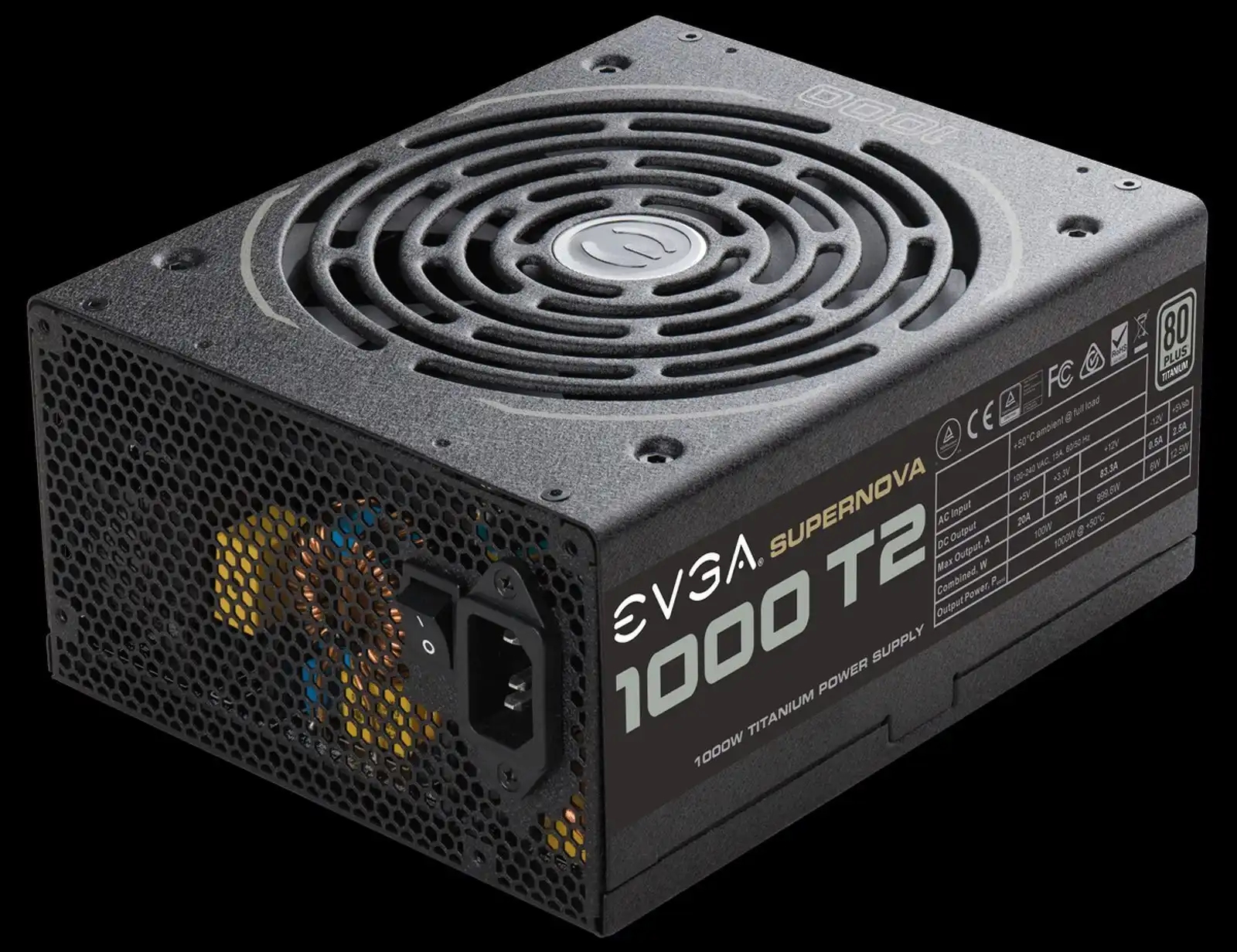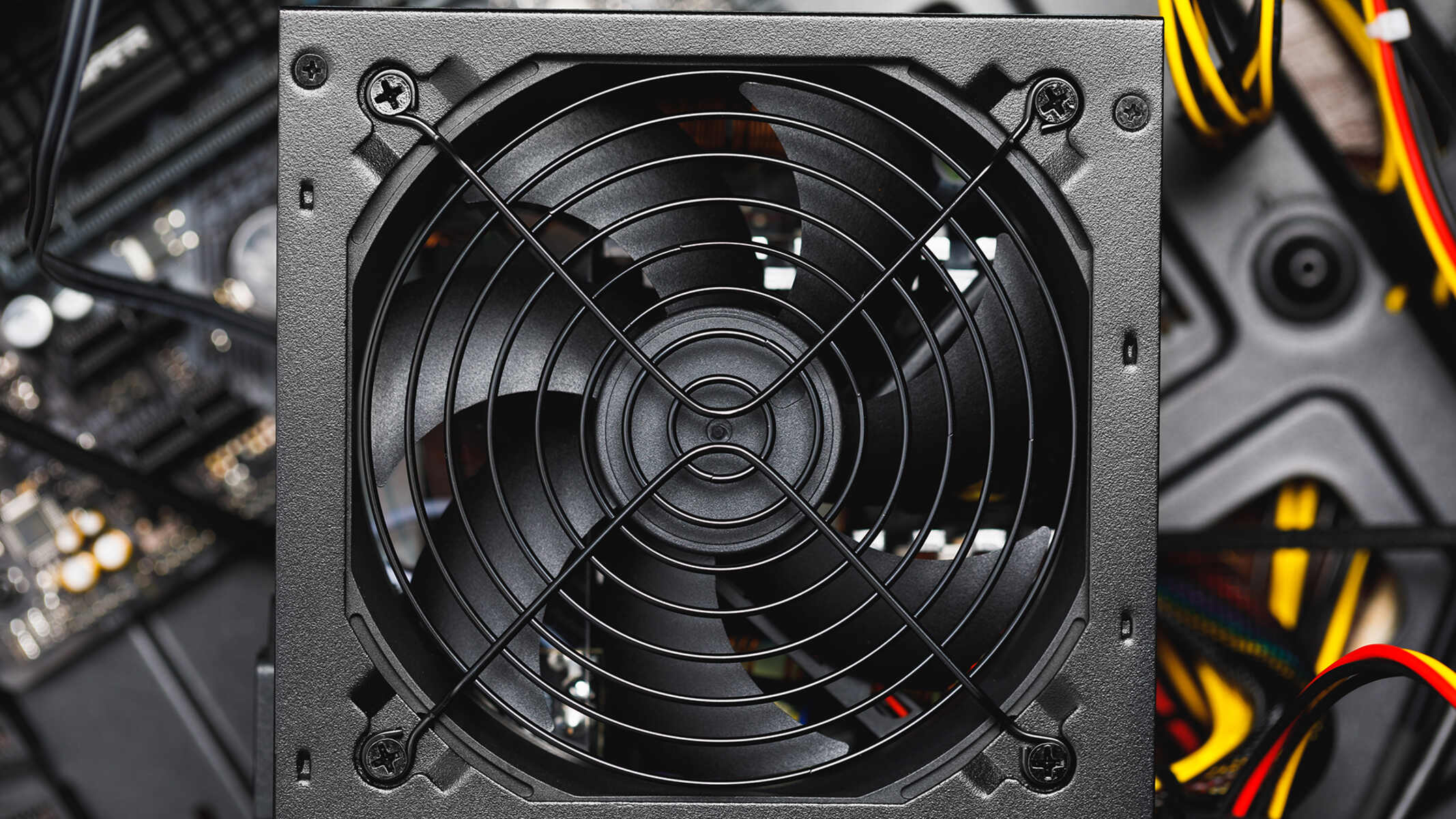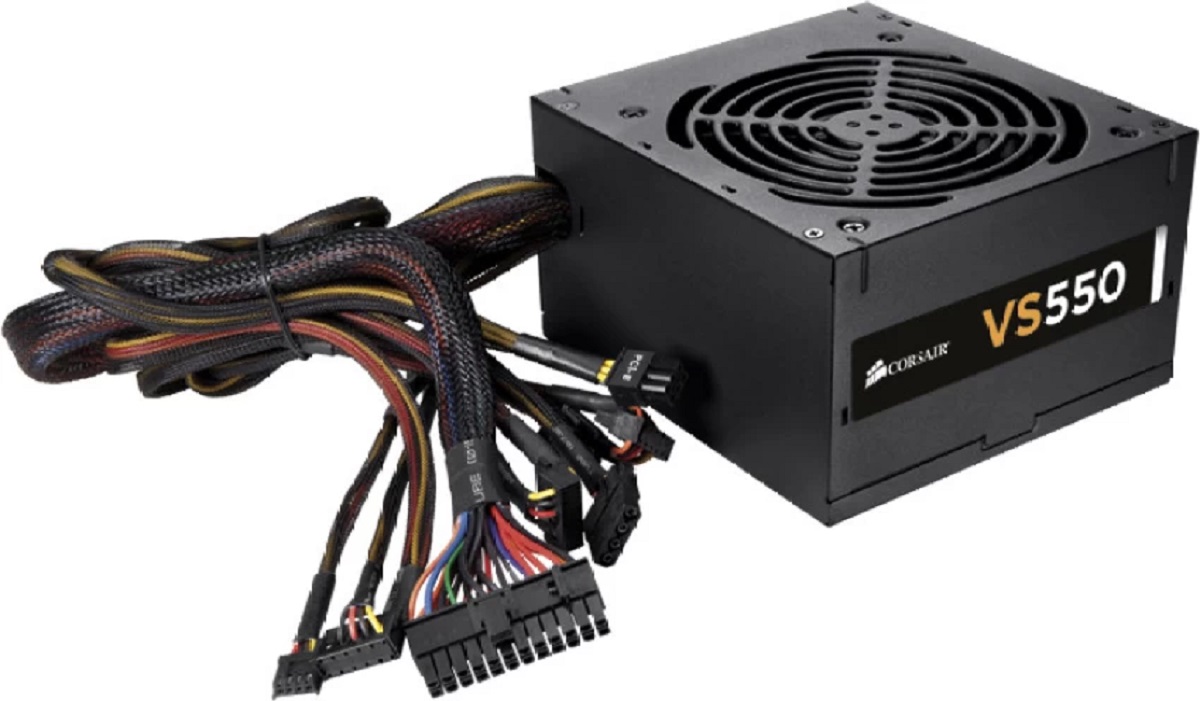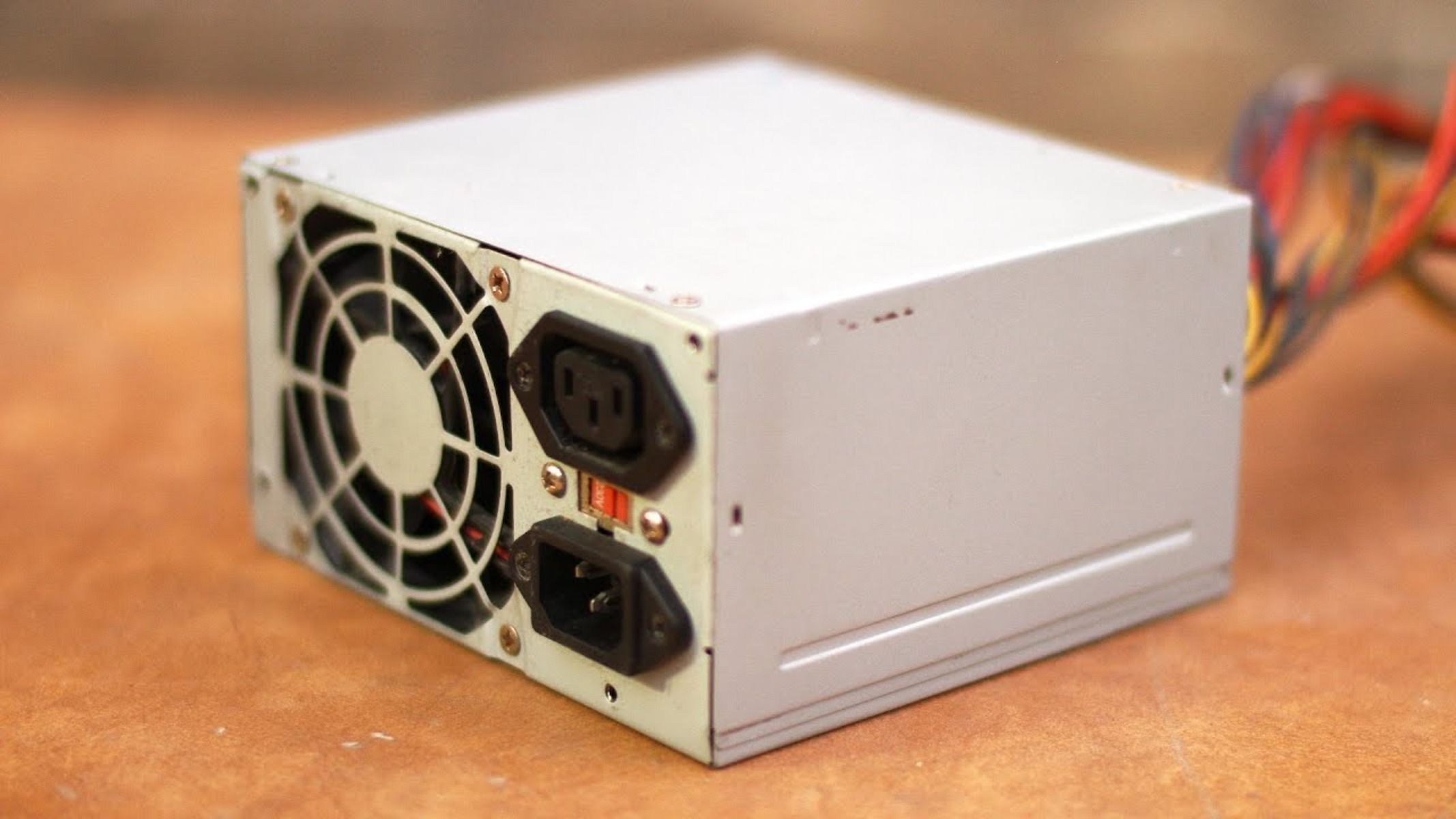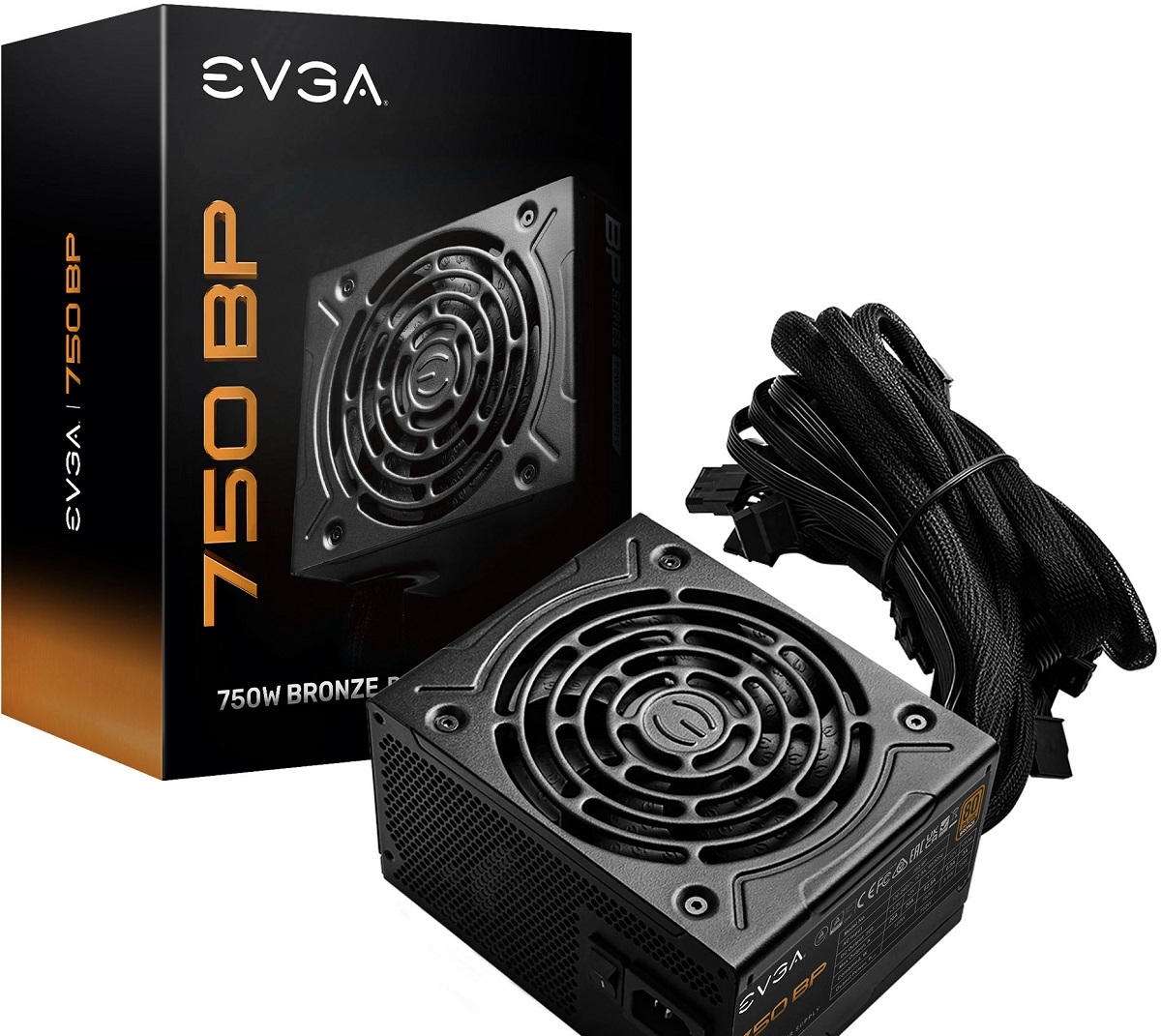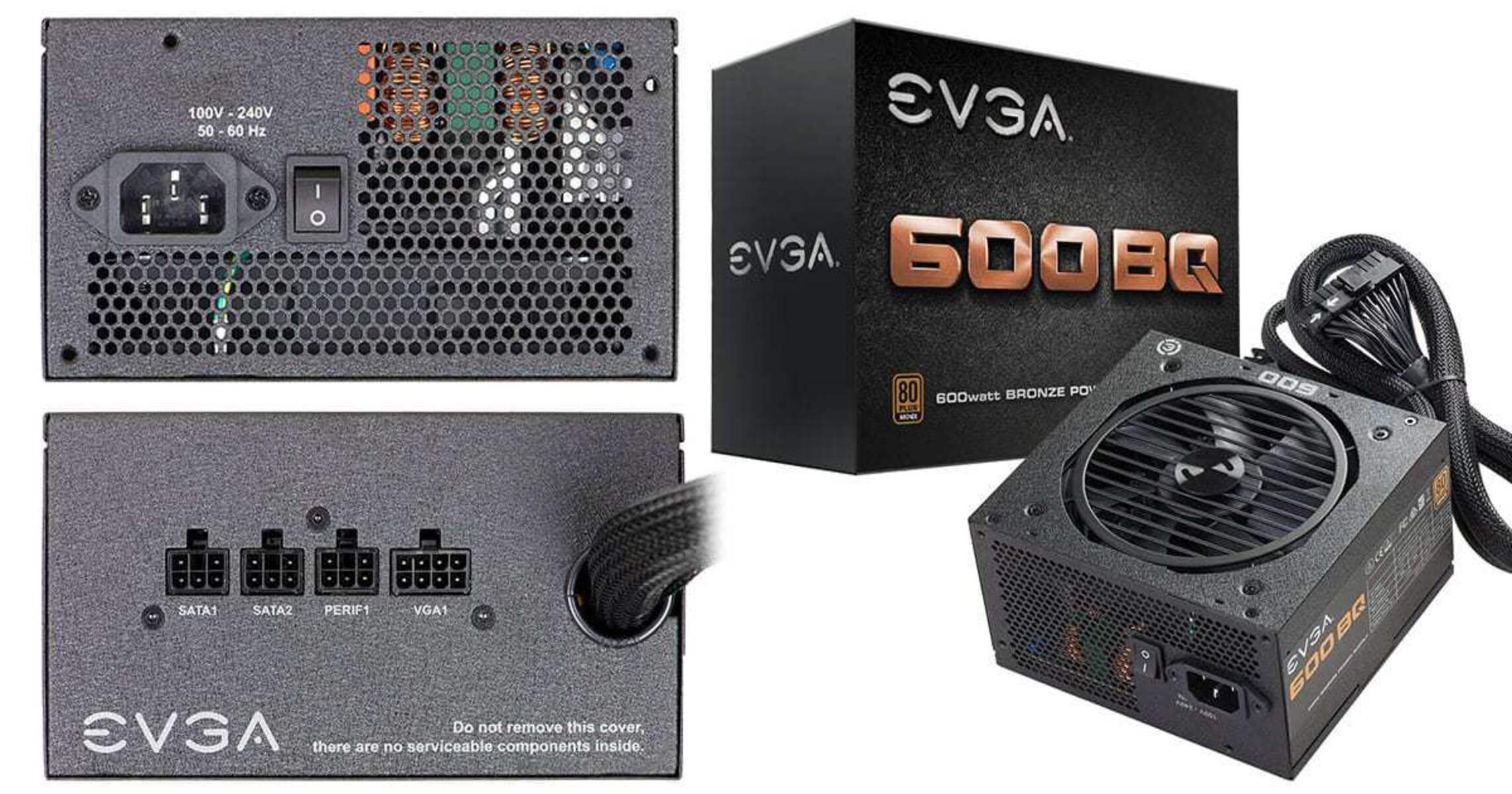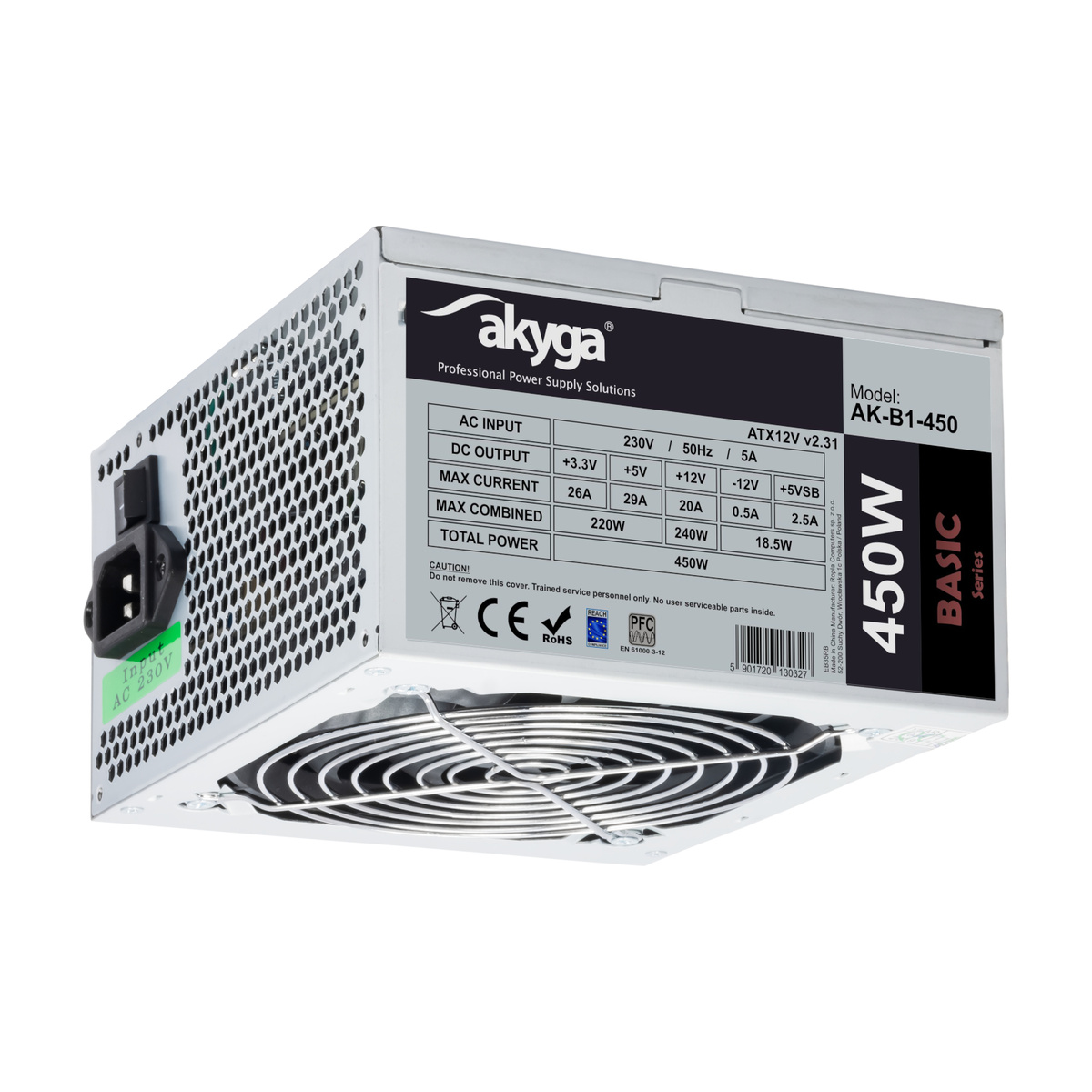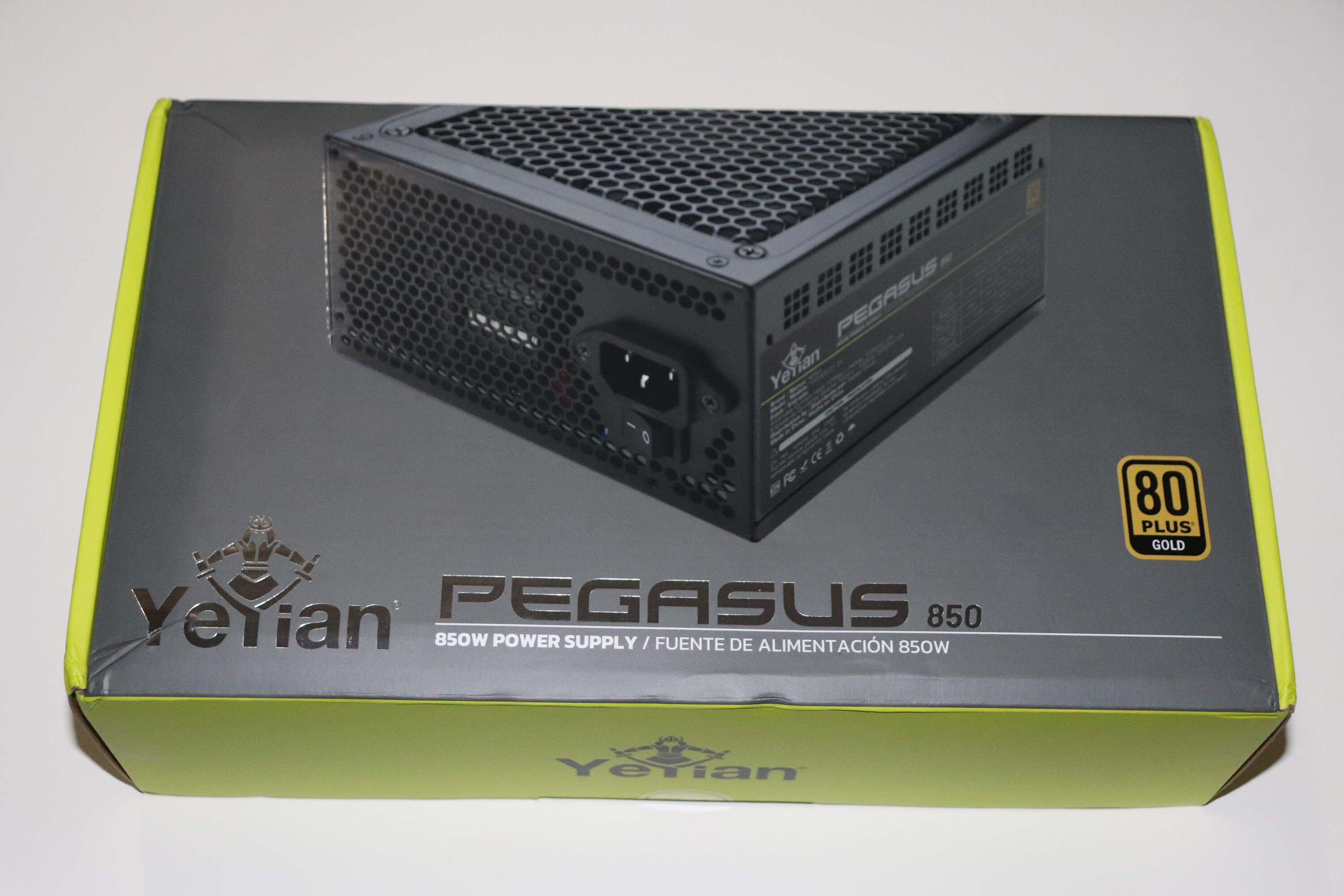Introduction
When it comes to building or upgrading a computer, there are many important factors to consider. From choosing the right processor to selecting the perfect graphics card, each component plays a crucial role in the performance of your system. However, there is one component that often gets overlooked but is equally as important: the Power Supply Unit (PSU).
The PSU is responsible for supplying power to all the other components of your computer. It ensures that each component gets the necessary amount of electricity to operate efficiently and reliably. Without a proper PSU, your computer may experience instability, crashes, or even damage to the hardware.
One key aspect of a PSU is its wattage, which refers to the amount of power it can deliver. The wattage of your PSU determines how much power your computer can handle, and it is crucial to know this information to ensure compatibility and to prevent any potential issues.
In this article, we will dive into the world of PSUs and explore why it is essential to know the wattage of your PSU. We will also provide you with different methods to determine the wattage of your PSU, as well as tips on how to choose the appropriate wattage for your system. So, let’s get started!
What is a PSU?
A Power Supply Unit, commonly known as a PSU, is an essential component of a computer system. It is responsible for converting the electrical power from the wall outlet into the proper voltage and current levels required by the various hardware components inside the computer.
The PSU acts as a power distribution center, supplying electricity to the motherboard, processor, graphics card, storage devices, and other peripherals. Without a PSU, your computer would not be able to function at all.
PSUs come in different form factors and wattages, catering to different types of computer builds and power requirements. They are typically measured in terms of wattage, which refers to the maximum amount of power the PSU can deliver to the components. A higher wattage PSU is capable of powering a system with more demanding hardware components, while a lower wattage PSU is suitable for systems with less power-hungry components.
Aside from providing power, PSUs also include various safety features to protect the computer components from power surges, voltage fluctuations, and short circuits. These safety features include over-voltage protection (OVP), under-voltage protection (UVP), over-current protection (OCP), over-power protection (OPP), and short-circuit protection (SCP).
PSUs also play a crucial role in the overall efficiency and longevity of a computer system. A high-quality PSU with good efficiency ratings ensures that the power is delivered more efficiently and generates less heat, leading to improved system stability and reduced electricity costs over time.
Overall, a PSU is a vital component that should not be overlooked when building or upgrading a computer. Understanding its role and importance will help you make informed decisions when it comes to selecting the right PSU for your system’s needs.
Why is it important to know the wattage of your PSU?
Knowing the wattage of your Power Supply Unit (PSU) is crucial for several reasons. Let’s explore the importance of this information:
Compatibility: Different hardware components require varying levels of power to operate optimally. Knowing the wattage of your PSU ensures that it can provide enough power for all the components in your system. If the PSU is underpowered, it may result in instability, crashes, or even damage to your components.
Upgradability: As technology advances and new, more power-hungry components are released, it becomes important to have a PSU that can support future upgrades. By knowing the wattage of your PSU, you can determine if it can handle the power requirements of new components you plan to install.
Efficiency: PSU efficiency is a critical factor in reducing energy costs and minimizing environmental impact. If you have a PSU that is significantly higher in wattage than your system’s power requirements, it may operate less efficiently. On the other hand, an underpowered PSU can put excessive strain on the components, decreasing their efficiency. Knowing the appropriate wattage helps strike the right balance for efficiency.
Reliability: A PSU that is operating near its maximum capacity for an extended period can be prone to overheating and may have a shorter lifespan. By choosing a PSU with adequate wattage, you can ensure that it runs within its optimal range, improving its reliability and longevity.
Preventing Hazards: Using a PSU with insufficient wattage can lead to power supply failures, which may cause electrical shorts or even fires. By knowing the wattage of your PSU and selecting one that meets your system’s requirements, you reduce the risk of electrical hazards.
Overall, understanding the wattage of your PSU is essential for ensuring compatibility, upgradability, efficiency, reliability, and safety of your computer system. Take the time to assess your system’s power needs and select a PSU that provides sufficient wattage to support your hardware requirements.
How to determine the wattage of your PSU?
There are several methods you can use to determine the wattage of your Power Supply Unit (PSU). Let’s explore these methods:
Method 1: Checking the PSU label: The easiest way to find the wattage of your PSU is to check the label on the unit itself. The label typically includes important information about the PSU, such as the manufacturer, model number, and wattage rating. Look for a number followed by “W” or “Watts” to determine the wattage of your PSU.
Method 2: Using online power supply calculators: If you are unsure about the wattage of your PSU or want to calculate the power requirements for a new build, you can utilize online power supply calculators. These calculators take into account the components you plan to install in your system, including the processor, graphics card, storage devices, and peripherals. By inputting the details of your components, the calculator will provide an estimated wattage requirement for your PSU.
Method 3: Checking the system requirements of your components: Each hardware component, such as the CPU and GPU, has its own power requirements specified by the manufacturer. By understanding the power consumption of your components, you can add up their wattage requirements to determine the total power needed. It’s important to consider any additional components, such as cooling systems or RGB lighting, that may also contribute to the overall power consumption.
It is worth mentioning that having a bit of extra headroom with the PSU wattage is recommended to accommodate any future upgrades or additions to your system. A good rule of thumb is to aim for a PSU that has a wattage rating around 20-30% higher than your estimated power requirements.
By using these methods, you can accurately determine the wattage of your PSU and select one that meets the power needs of your system. Ensuring that your PSU has sufficient wattage is essential for maintaining stability, compatibility, and reliability for your computer build.
Method 1: Checking the PSU label
One of the simplest and most direct ways to determine the wattage of your Power Supply Unit (PSU) is by checking the label on the unit itself. The PSU label contains crucial information about the specifications of the unit, including the wattage rating.
To find the wattage, look for a number followed by “W” or “Watts.” This indicates the maximum power output of the PSU. For example, if the label displays “500W,” it means the PSU has a wattage rating of 500 watts.
Remember to take note of the brand, model number, and other details as well, as these can be useful if you ever need to reference or replace the PSU in the future.
Locating the PSU label may require opening the computer case and examining the unit directly. The label is typically found on the side or top of the PSU. In some cases, it may also be located on the back of the unit, near the power cable connection.
Once you have identified the wattage of your PSU through the label, you can use this information to determine if it meets the power requirements of your computer build. Ensure that the wattage is sufficient to handle the power demands of your components, including the CPU, GPU, storage drives, and any additional peripherals.
It’s important to note that the wattage rating is not the only factor to consider when choosing a PSU. Other factors to keep in mind include the efficiency rating, quality of components, and availability of necessary power connectors for your specific hardware.
By checking the PSU label, you can quickly and easily determine the wattage of your PSU. This method provides a reliable way to ensure that your power supply meets the power requirements of your computer system, promoting stability and optimal performance.
Method 2: Using online power supply calculators
If you’re unsure about the wattage of your Power Supply Unit (PSU) or need to calculate the power requirements for a new computer build, using online power supply calculators can be a helpful solution. These calculators take into account the components you plan to install in your system and provide an estimated wattage requirement for your PSU.
To use an online power supply calculator, you’ll typically need to input information about your hardware components. This includes details such as the processor, graphics card, storage devices, RAM, and any additional peripherals you plan to connect.
The calculator will then calculate the power consumption of each component based on manufacturer specifications and industry standards. It will also factor in the wattage requirements of other components, such as fans, cooling systems, and RGB lighting, if applicable.
Online power supply calculators not only provide an estimated wattage requirement for your PSU but also offer additional insights into power distribution, recommended PSU efficiency ratings, and guidance on choosing the right PSU for your system. Some calculators even provide options to customize parameters such as overclocking or future upgrades, allowing for more accurate power consumption estimations.
Keep in mind that online power supply calculators provide estimates and should be used as a starting point. It’s wise to have a safety margin to account for any potential power spikes or future upgrades. A general recommendation is to aim for a PSU with a wattage rating around 20-30% higher than the estimated power requirements.
Using an online power supply calculator is convenient and can save time compared to the manual calculation of each component’s power consumption. It provides a reliable estimate for selecting an appropriate wattage for your PSU, ensuring compatibility and stability for your computer system.
Remember to consult multiple calculators and compare the results to get a better understanding of your system’s power requirements. Additionally, double-checking the recommended wattage against the specifications of your hardware components is always a good practice to ensure accurate calculations.
Method 3: Checking the system requirements of your components
Another effective method to determine the wattage of your Power Supply Unit (PSU) is by checking the system requirements of your hardware components. Each component, such as the CPU, GPU, and other peripherals, typically has specific power requirements provided by the manufacturer.
Here’s how you can use this method to estimate your PSU wattage:
1. Processor (CPU): Visit the website or product page of your CPU manufacturer and locate the specifications section. Look for information regarding power consumption or thermal design power (TDP). The TDP represents the maximum power dissipation under normal operating conditions and can be used as a rough estimate of the CPU’s power requirements.
2. Graphics Card (GPU): Follow the same process for your graphics card. Visit the manufacturer’s website or product page and check the specifications. Look for power consumption details or the recommended PSU wattage. High-performance GPUs often require more power, especially if you plan to use multiple GPUs in a multi-GPU setup.
3. Storage Drives and Peripherals: While storage drives such as SSDs and HDDs consume relatively low power, it’s still important to factor them in. Additionally, consider any other peripherals you plan to connect, such as sound cards, network cards, or USB devices. These devices usually have minimal power requirements but add up to the overall power consumption of your system.
Add up the power consumption estimates of each component to get a rough idea of the total wattage required for your PSU. Keep in mind that these estimates may vary depending on the specific model or overclocking settings you plan to use.
It’s also essential to account for any potential future upgrades or additions to your system. Consider allocating some headroom for these upgrades by choosing a PSU with a slightly higher wattage than the current estimation. This ensures that you have enough power for future expansion without having to replace the PSU down the line.
Using the system requirements of your components as a guideline, you can estimate the wattage needed for your PSU. This method allows for a more personalized calculation, taking into account the specific power requirements of your hardware setup.
Remember that these estimates are approximate, and it’s always advisable to consult multiple sources and calculators to validate the wattage requirements. Ensuring that your PSU can handle the power demands of your components is crucial for maintaining stability, efficiency, and longevity in your computer system.
Understanding power consumption of different hardware components
When determining the wattage of your Power Supply Unit (PSU), it’s essential to understand the power consumption of different hardware components. Each component in your computer system has its own power requirements, which contribute to the overall wattage needed. Let’s take a closer look at the power consumption of some key components:
1. Processor (CPU): The CPU is one of the most power-hungry components in a computer. Its power consumption is measured by the thermal design power (TDP), which represents the maximum amount of power the CPU can dissipate under typical usage. Higher TDP values indicate higher power consumption. CPUs designed for gaming or demanding applications usually have higher power requirements compared to those designed for basic computing tasks.
2. Graphics Card (GPU): Graphics cards are another component that can significantly impact power consumption. GPUs are responsible for rendering graphics and are crucial for gaming and graphic-intensive applications. High-performance GPUs with powerful graphics processors and large amounts of memory tend to consume more power. It’s important to consider the recommended PSU wattage provided by the GPU manufacturer, especially if you plan to use multiple GPUs in a multi-GPU setup.
3. Motherboard and RAM: While the power consumption of the motherboard itself is relatively low compared to other components, it plays a vital role in distributing power to different parts of the system. The RAM modules also consume a small amount of power, with higher-speed and higher-capacity modules having slightly higher power requirements.
4. Storage Drives: Storage drives, such as solid-state drives (SSDs) and hard disk drives (HDDs), have low power requirements. SSDs tend to consume less power compared to HDDs since they have no moving mechanical parts. However, it’s important to account for the power consumption of storage drives, especially when configuring multiple drives in a RAID setup.
5. Peripherals and Cooling: Peripherals, such as sound cards, network cards, and USB devices, generally have minimal power requirements. However, when calculating PSU wattage, it’s essential to consider the power needs of all connected peripherals. Additionally, cooling systems, including fans and liquid cooling solutions, consume some power. While cooling systems have relatively low power consumption individually, it adds up when considering multiple fans or a high-performance liquid cooling setup.
Each component’s power consumption can vary depending on factors such as the specific model, manufacturing process, and operating conditions. It’s important to consult the manufacturer’s specifications or product documentation for accurate power consumption values.
By understanding the power consumption of different hardware components, you can estimate the total wattage needed for your PSU. This knowledge allows you to select a PSU that can adequately provide power to your components, promoting system stability, and efficient operation.
How to choose the right wattage for your PSU?
Choosing the right wattage for your Power Supply Unit (PSU) is crucial to ensure optimal performance and stability for your computer system. Here are some factors to consider when selecting the appropriate wattage:
1. Determine your power requirements: Calculate the power consumption of your hardware components using methods mentioned earlier, such as checking system requirements or using online power supply calculators. Add up the estimated wattage requirements to get a rough idea of the total power needed.
2. Consider future upgrades and expansions: If you plan to upgrade or add more powerful components in the future, it’s wise to choose a PSU with a higher wattage than your current requirements. This ensures that you have enough power for future expansion without having to replace the PSU.
3. Account for efficiency and headroom: PSU efficiency ratings indicate how effectively it converts AC power to DC power. Higher efficiency ratings, such as 80 Plus Bronze, Silver, Gold, or Platinum, mean that the PSU wastes less energy as heat, resulting in lower electricity bills. Additionally, allocating some headroom, typically around 20-30% higher than your estimated power requirements, helps maintain optimal efficiency and reduces the strain on the PSU.
4. Consider your budget: Higher wattage PSUs tend to be more expensive than lower wattage ones. It’s important to strike a balance between your budget and the power requirements of your system. Avoid overspending on a significantly higher wattage PSU if it is not necessary for your current or future needs.
5. Choose a reliable brand and quality PSU: Investing in a reputable brand and high-quality PSU ensures reliability, efficiency, and safety. Trusted PSU manufacturers often provide better warranties, better voltage regulation, and longer lifespans. It’s important to read reviews and consider feedback from other users when selecting a PSU.
6. Consider modularity: Modular PSUs allow you to connect only the necessary cables, reducing cable clutter inside your system. This not only improves airflow but also makes installation and maintenance easier. Modular PSUs are available in various wattages and can be a convenient option if you value clean cable management.
By considering these factors, you can choose the right wattage for your PSU. It’s important to ensure that the selected PSU provides sufficient power for your current components and allows for future upgrades. A properly matched PSU ensures stability, efficiency, and reliable performance for your computer system.
Conclusion
Understanding the wattage of your Power Supply Unit (PSU) is crucial when building or upgrading a computer system. The wattage of your PSU determines how much power your components can receive, ensuring compatibility, stability, and optimal performance.
In this article, we explored three methods to determine the wattage of your PSU. Checking the PSU label provides a quick and direct way to find the wattage rating. Using online power supply calculators offers a convenient method to estimate power requirements based on your hardware components. Checking the system requirements of your components allows for a more personalized calculation, considering the power consumption of each component.
It is important to choose the right wattage for your PSU based on your system’s power requirements, future upgrades, efficiency needs, budget, and brand reliability. Allocating some headroom and considering modularity can also enhance cable management and overall system performance.
Remember, a PSU that is properly matched to your system’s power needs helps ensure stability, efficiency, and longevity. It is always recommended to consult manufacturer specifications, use reputable calculators, and seek expert advice to ensure accuracy in determining the appropriate wattage for your PSU.
By carefully considering the wattage of your PSU and making an informed choice, you can build a reliable and efficient computer system that meets your performance needs and supports future growth.







